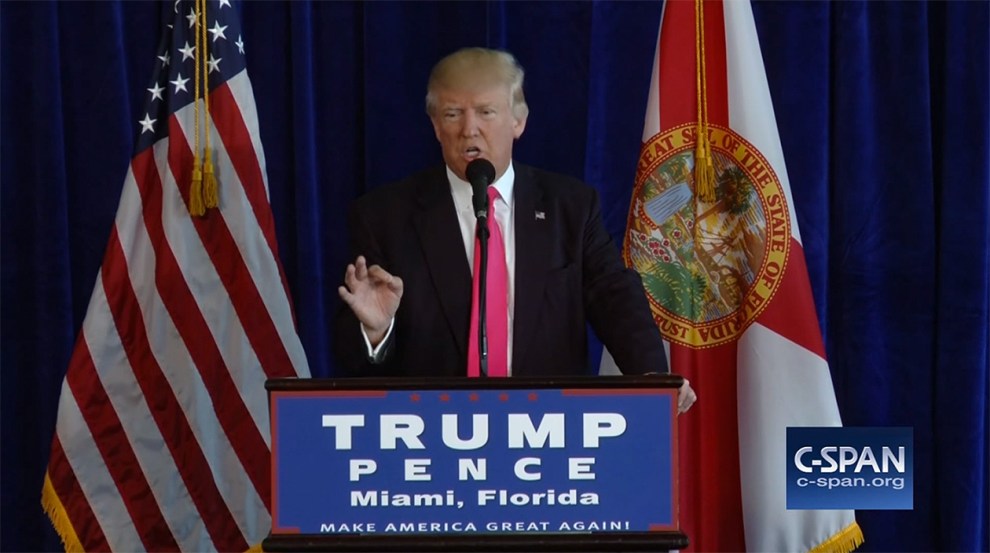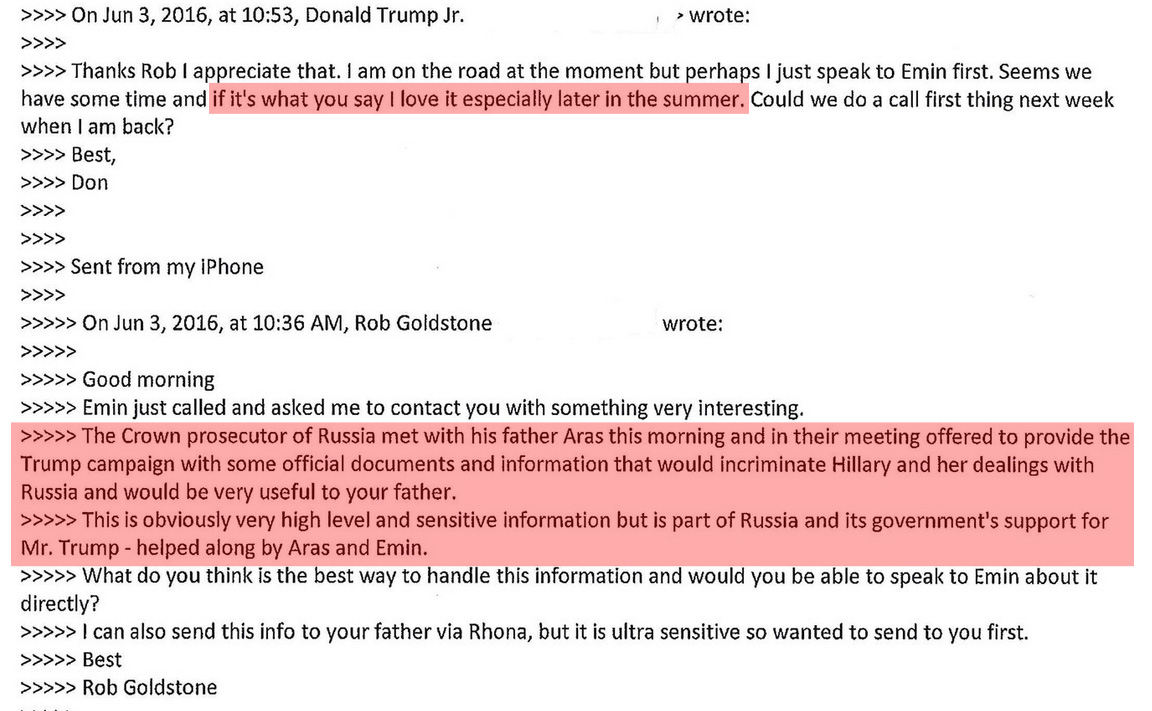
Miami, Florida, July 27, 2016: "Russia, if you’re listening, I hope you’re able to find the 30,000 emails that are missing."C-SPAN
A timeline of the entire Russia election hacking affair would be several yards long, so how about if we just do a short, focused one? Here you go:
- Summer 2014: The Dutch intelligence service, AIVD, breaks into the network of the Russian hacker group Cozy Bear. AIVD can see everything the Russians do.
- Summer 2015: AIVD watches as the Russians begin their efforts to hack into DNC servers and the email accounts of Democratic Party leaders.
- April 2016: Natalia Veselnitskaya, a Putin confidant and one of the most active Russian advocates for repealing sanctions imposed by the Magnitsky Act, meets with Rep. Dana Rohrabacher (R–Calif.) in Moscow. Veselnitskaya gives Rohrabacher a memo alleging that major Clinton campaign donors have evaded taxes on some of their Russian investments. Rep. French Hill (R–Arkansas) gets a copy of the same memo.
- June 3: Donald Trump Jr. receives an email from Rob Goldstone, a promoter who helped Donald Trump bring the 2013 Miss Universe Pageant to Moscow. Goldstone writes that a mutual friend has been given access to “official documents and information that would incriminate Hillary and her dealings with Russia and would be very useful to your father.”

- 17 minutes later: Trump Jr. replies that “if it’s what you say I love it especially later in the summer.”
- June 9: Natalia Veselnitskaya meets at Trump Tower with Donald Trump Jr., Jared Kushner, Paul Manafort, and other members of the Trump team. Later they all tell various lies about what was discussed until evidence leaks that contradicts them.
- June 22: Wikileaks sends an email to the Russian hackers, who are publicly posing as Guccifer 2.0, asking them to “[s]end any new material [stolen from the DNC] here for us to review and it will have a much higher impact than what you are doing.” A few days later Wikileaks makes another request: “if you have anything hillary related we want it in the next tvveo [sic] days prefable [sic] because the DNC [Democratic National Convention] is approaching and she will solidify bernie supporters behind her after…we think trump has only a 25% chance of winning against hillary . . . so conflict between bemie and hillary is interesting.” A month later, shortly before the Democratic convention starts, Wikileaks releases the Russian trove of DNC emails.
- July 27: While the Democratic convention is in progress, Donald Trump suggests he’s open to recognizing Russian control of Crimea and then says, “Russia, if you’re listening, I hope you’re able to find” Hillary Clinton’s missing 30,000 emails.
- Later the same day: Russian hackers begin their first attempt to break into Clinton’s email server.

- October-November 2016: The Russians never find Clinton’s emails, but they do find John Podesta’s. These are turned over to Wikileaks, which releases them in 33 installments during the closing weeks of the campaign.













